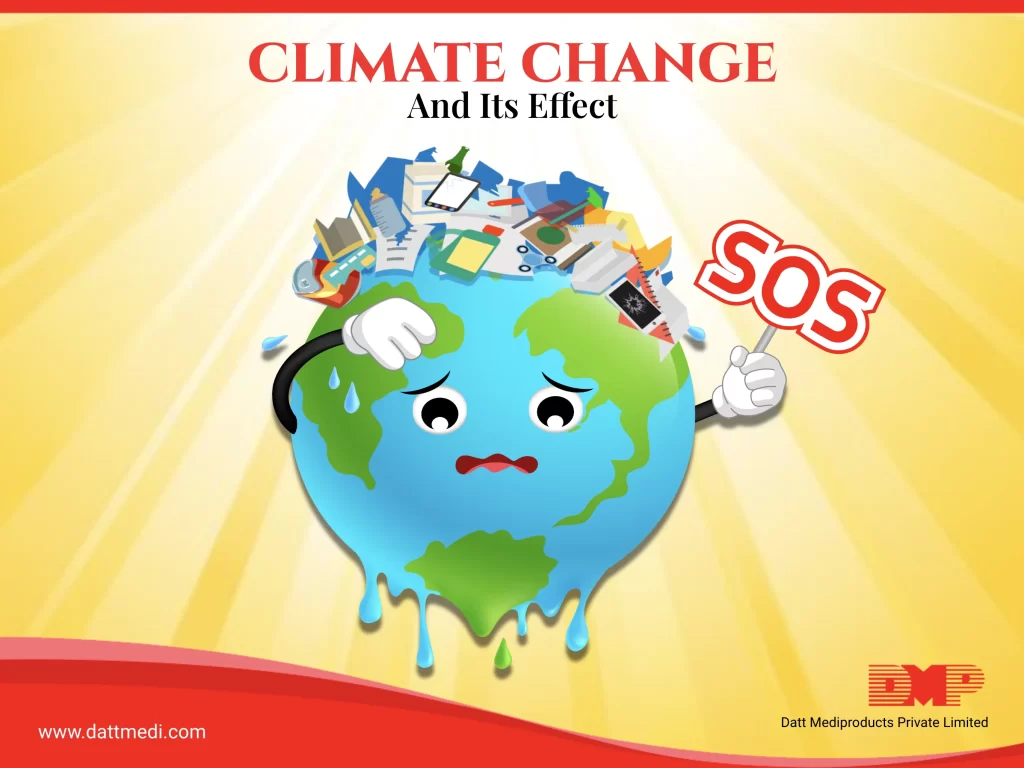
Climate Change and Global Warming are two upheavals that will spare no one.
In our previous blog, we discussed these two phenomena, some causes, and facts. In this blog, we are going to discuss the impact that global warming has on our lives, marine life, and the ecosystem.
On humans:
There have been various negative impacts of climate change on the health, social life and geopolitical balances of humans. Storms and flood-like extreme climatic conditions can result in drinking water contamination, compromising basic infrastructure and in certain cases even community displacement. There is a huge impact on resources and they start to become scared in regions affected and thus having an effect on the global economy also.
Climate change and air pollution are interlinked. When you have a build-up of Co2 in the atmosphere it creates a blanket sort of effect and traps the heat on the surface of the earth causing the temperature to rise. The increase in temperature along with the extreme weather conditions can lead to a damper atmosphere, which acts as a growing platform for circulating mold, pollen and other allergenic pollutants. The damper the weather, the more is the risk of insect-borne diseases like malaria, dengue fever, viral infections, and Lyme disease. The rising global temperature is leading to increasing number of illnesses.
WHO says that “climate change is expected to cause approximately 250,000 additional deaths per year” between the years 2030 and 2050.
Extreme Weather:
Global warming has triggered changes in weather patterns and conditions leading to natural disasters like hurricanes, cyclones, typhoons, drought, floods, heatwaves, more precipitation, rain and snow. Extreme conditions are followed by more deaths, victims, refugees and material damage. Take the bush fires that engulfed parts Australia last year.
Researchers show that climate change leads to changes in the weather conditions that increased the risk of bush fires by 30%. Australia had a severe bush fire season that devastated entire regions and leads to the deaths of many humans and animals.
Rising Sea Level:
The rising temperature is causing the melting of ice at the poles, which is increasing the sea level. There is a threat of submerging coastal communities and small island states. The melting ice sheets are expected to raise the oceans by one to four feet higher by 2100 threatening the coastal ecosystems and low-lying areas.
Acidification of the Oceans:
The oceans are expected to rise by 1 meter by 2100 with 6cm rising over past 20 years. This is due to the massive melting of permafrost and ice sheets at the poles. With the rise in pollution, the oceans capture more CO2, and this reacts with the seawater forming carbonic acid. This causes the acidity of seawater to increase making the oceans acidic. This acidification of oceans is arousing many serious questions about the adaptability of seashells or coral reefs.
The acidic water is making it harder for the coral to build their skeletons, which is making them more brittle. In addition to this, the rising temperature of the ocean water is causing the corals to expel their colorful algae, leaving them to starve and turning them white. With the death of the coral reefs, the entire ecosystem that relies on them is also affected, causing death and illnesses among fish, algae, coral and other organisms.
Effect on Biodiversity:
Global warming impacts biodiversity. Climate change due to global warming is disturbing the ecosystems and cycles of plant reproduction. The life habits and migratory cycles of animals are disturbed by the scarcity of resources and variations in life conditions in natural environments. Some of the species including endemic species are even becoming extinct.
The disrupted ecosystems and desertification are increasing the number of deaths per year i.e. between 10,000 and 50,000 species. A mere 1.5°C average rise is putting 20-30% of species at risk of extinction. Basically, the balance of biodiversity is modified and threatened.
We @DattMediproducts understand that we the humans need to play our part and find ways to reduce global warming and reverse climate change. We can opt for renewable energies instead of fossils, consuming energy & water efficiently, sustainable transportation to reduce CO2 emissions, reforestation, encouraging better use of natural resources, and last but not the least-recycling.
Let us all pledge to make our earth a better planet to live on.





